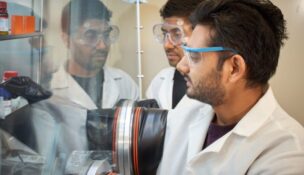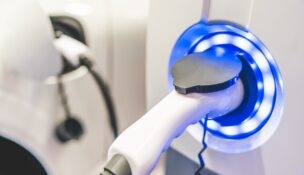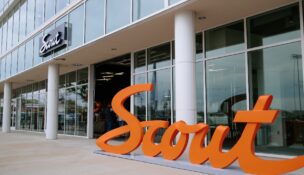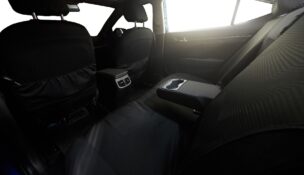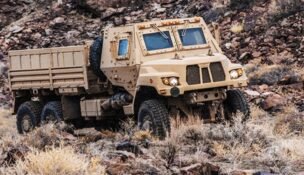Clemson University students debut autonomous off-road vehicle for disaster missions
Ross Norton //August 28, 2023//
Clemson University students debut autonomous off-road vehicle for disaster missions
Ross Norton //August 28, 2023//
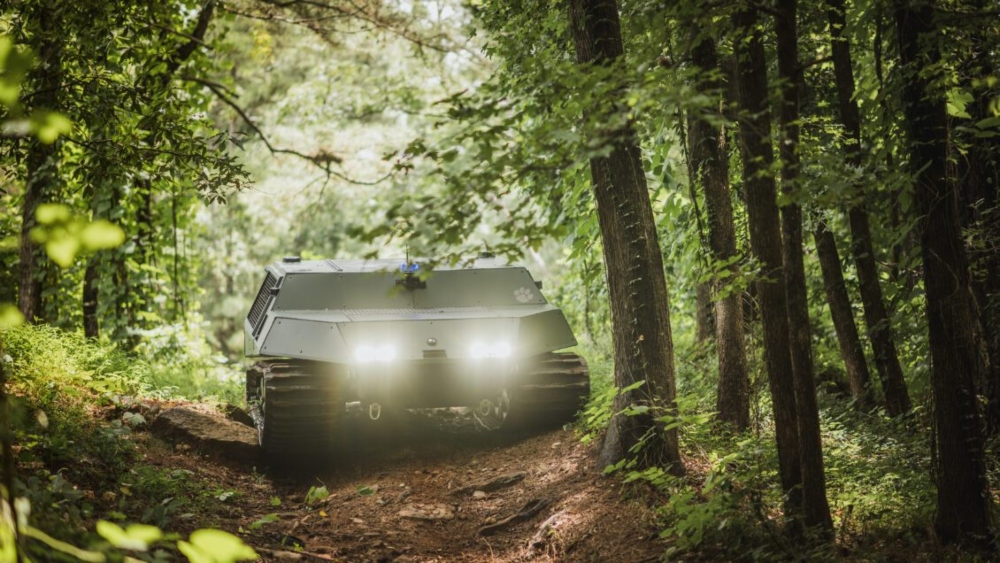 To expedite the delivery of supplies and gather real-time data in disaster areas, Clemson University students at the International Center for Automotive Research in Greenville have developed an off-road reconnaissance and relief vehicle that can navigate all on its own.
To expedite the delivery of supplies and gather real-time data in disaster areas, Clemson University students at the International Center for Automotive Research in Greenville have developed an off-road reconnaissance and relief vehicle that can navigate all on its own.
Each year, natural disasters cause significant damage and disruption to the nation’s transportation infrastructure, destroying delivery routes to affected populations and complicating efforts to assess the situation. In 2022 alone, natural disasters caused an estimated $165.1 billion in damages in the United States, according to the U.S. National Oceanic and Atmospheric Administration.
Equipped with lidars, cameras and high-accuracy GPS, the autonomous vehicle can sense and navigate on unknown terrain. The vehicle can reach 45 mph, scale 18-inch high obstacles, maneuver 60% grade surfaces and pivot 360 degrees in place in two seconds, according to a university news release.
Its adaptable series-hybrid powertrain allows for powerful maneuverability and improved fuel economy as well as silent travel in electric-only mode. When the vehicle arrives at its destination, it can deliver emergency supplies and act as a mobile generator in case of electricity disruptions without putting humans in harm’s way.
The vehicle is a result of Clemson’s flagship rapid vehicle prototype program, Deep Orange, housed within the university’s two-year master’s degree focused on systems integration in automotive engineering. Two cohorts of Deep Orange students collaborated across three years to develop this autonomous, high-speed, off-road relief vehicle from the ground up.
Students worked with faculty and staff at CU-ICAR, along with the project’s primary sponsor U.S. Army DEVCOM Ground Vehicle Systems Center.
Related article: Clemson, Army move ahead on autonomous tank
Clemson announced its strategic partnership with GVSC in 2020 with the university founded its Virtual Prototyping of autonomy-enabled Ground Systems center, backed by the U.S. Department of Defense. The partnership was designed to propel research breakthroughs in off-road vehicle autonomy, powertrain electrification, and digital engineering tools to more effectively support the mission of GVSC.
“Reliable and robust off-road driverless technology is critical to developing the next generation of military mobility vehicles,” U.S. Army chief scientist at GVSC David Gorsich said in the release. “Even more critical is developing skilled and experienced engineers who can continue to drive innovation in our sector in the future. This project addresses powertrain electrification and digital engineering processes, which are key development areas for GVSC. Along with autonomy, these development areas are the driving forces behind GVSC’s research partnership with Clemson.”
After the student team graduates, the Deep Orange 14 vehicle represents a unique and complex state-of-the-art research asset for Clemson, moving the university to the forefront of autonomous high-speed off-road research, the release stated. Not only is it a validation and verification tool for the intricate dynamic modeling of tracked skid steer vehicles in challenging topographies, but also a sophisticated deployment platform for cutting-edge control algorithms and energy management strategies for series hybrid vehicles.
“Witnessing the development of a vehicle from the ground up and observing its successful performance while meeting all specifications is incredibly rewarding,” Kaivalya Khorgade, who served as Deep Orange 14’s chief vehicle engineer, said in the release. “With its tracked design and advanced series-hybrid powertrain, the vehicle can conquer various obstacles, while its autonomous features, including an array of camera and lidar sensors, offer invaluable data collection and urban reconnaissance capabilities.”
Access to the research tool with its multilayered system integration is a rare opportunity in academia and distinct research advantage for Clemson, the release stated.
“Being challenged as a student to develop something of this complexity, something at the edge of technology, is an incredible learning experience – let alone seeing their work live on through the discoveries of our researchers,” BWM Chair in Systems Integration at Clemson Chris Paredis said in the release. Paredis oversaw the Deep Orange program during both cohorts.
MISSION SCENARIOS
The vehicle addresses two mission scenarios, which students used to determine the vehicle’s technical specifications and critical functions.
Cold Weather Disaster Relief Mission
An unexpected snowstorm blocks highways and leaves civilians in need of food, water, and power for electricity. The autonomous vehicle must provide much-needed resources until workers can repair the local infrastructure, traversing unknown off-road terrain to get to the town in time.
Urban Reconnaissance Mission
A natural disaster such as a hurricane or flood changes the topography so dramatically that even aerial cameras are not able to discern if the area is traversable. The autonomous vehicle must drive through the area to assess damage, create a digital map and determine whether ground vehicles behind it would be able to pass or get stuck.
CRITICAL VEHICLE FUNCTIONS
Autonomous Off-Road Path Planning
Using LiDARs, cameras and GPS, the Deep Orange vehicle navigates autonomously through unstructured, dynamically-changing environments. The autonomy algorithms can plan missions through unknown terrain, gathering information and updating maps based on the on-board sensors.
Off-Road Maneuverability
With its 24-inch-wide tracks, the Deep Orange vehicle can traverse almost any terrain. It can travel at speeds up to 45 mph, scale 18-inch-high obstacles and perform a full 360-degree pivot-in-place in less than two seconds.
Landscape Reconnaissance
After a natural disaster such as a hurricane or earthquake, the Deep Orange vehicle can venture out to gather information about the changed landscape and determine the traversability of the terrain to aid subsequent logistical support. Exterior pan-tilt-zoom cameras can be manipulated and viewed remotely while the vehicle moves autonomously. Collected data is compiled into a map to be wirelessly sent via 5G network for analysis.
Series Hybrid Propulsion
The vehicle’s tracks are powered by permanent magnet synchronous motors that can produce 340 kW (456 HP) of peak power per track. A 53kWh battery allows for eight hours of low-speed silent watch capability. In addition, a 3.0L V6 onboard diesel generator can fully replenish the battery in 30 minutes, provide additional power for the traction system during high power-demand maneuvers or act as a mobile generator for survivors when it reaches its destination.
Dynamic Research Platform
With an intuitive user interface for remote control and autonomy, the Deep Orange vehicle is ready to be used by researchers working on advanced autonomy, energy management, vehicle dynamics and digital twins. It includes extensive sensor suites for vehicle dynamics, powertrain and energy management, and thermal management. The data for all these sensors are accurately time-stamped and curated to make it available for further analysis by researchers.
t





